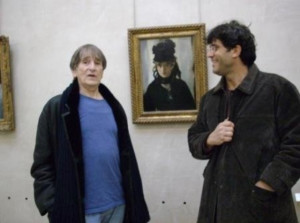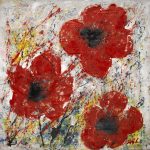Steps to Stay Positive by David Najar
Contemporary artist David Najar admits with a smile that he is an optimist – or at least that he tries to be one.
Najar says that a “good mood means no suffering.” When he paints he feels healed, and finds inspiration from the natural beauty of the world around him. By studying Najar’s philosophy and creative process, you can take away a few lessons to use in life to stay positive.
Take a breather
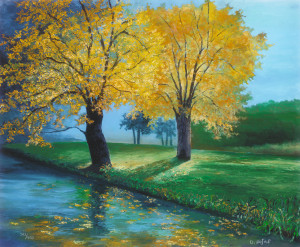
“Golden Light” (2013), David Najar
When Najar creates a painting, he spends about three hours a day in a bright, quiet room. By reflecting on nature, the Israeli artist can then encourage people through his art to calm down and take a moment for themselves. Taking a step back is sometimes all that is needed to stay positive.
“Sometimes you are very busy, intense in the mind, with our cellular stuff, computers – we are not breathing,” he says. “This is kind of an invitation to take a break, to breathe, to see all the beauty we have around us.”
Appreciate your surroundings
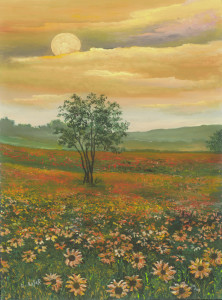
“Heaven” (2014), David Najar
One of Najar’s favorite notions is that beauty is everywhere. He believes that you don’t need to travel far to see something worthwhile. He says if one stops to look around, they can see the harmony, the colors, and the beauty that surrounds us, even if it’s not at an ideal spot or destination.
“Sometimes, to breathe, we think we need such an expensive vacation to somewhere, but we can do it every day,” he says. “There is a lot of beauty around us.”
Trust your instincts
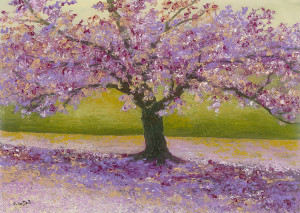
“Lavender Day” (2014), David Najar
It’s easy to second-guess yourself, but oftentimes, trusting your intuition is the best way to go. When Najar paints, he paints instinctively, using his hands to express his emotions. His color choices arise on instinct. His first art teacher observed that Najar painted “from strong instinct.” By listening to these instincts, Najar is able to produce colorful, breathtaking works.
“The artist doesn’t all the time notice why, but he just feels to express himself on the canvas,” he says.
Don’t give up
Criticism can be tough to hear, but know that from it you can learn and improve. Najar didn’t formally study at an art school, instead learning from various teachers. The same art teacher that noted his instinctive style told Najar after one year of lessons to leave the class and paint alone because he already had an “independent style.”
Najar said this as a criticism was pretty hurtful to hear, but he continued to pursue art nonetheless. Years later, he retold the story to his mentor and friend, the late Itzchak Tarkay. The renowned artist surprised Najar by saying his teacher’s suggestion was “a great idea” and that he should thank his teacher for the advice.
In fact, Tarkay would not compliment Najar directly during their five years of sharing studio space, instead offering him tips and opinions like a brother. Najar recognized that Tarkay wasn’t being mean, but was encouraging him to not become complacent and continually seek improvement.
“We were teasing each other, all the time next to me he says ‘don’t think you are a big shot,’” Najar says with a laugh. “He didn’t want me to feel like I was comfortable because…he wanted me to find more.”
Ultimately, Tarkay paid him a compliment by introducing Park West Gallery to his art. If Najar didn’t stay positive and had let the critiques alter his artistic course, we might not now be able to enjoy the beautiful artwork he creates today.

